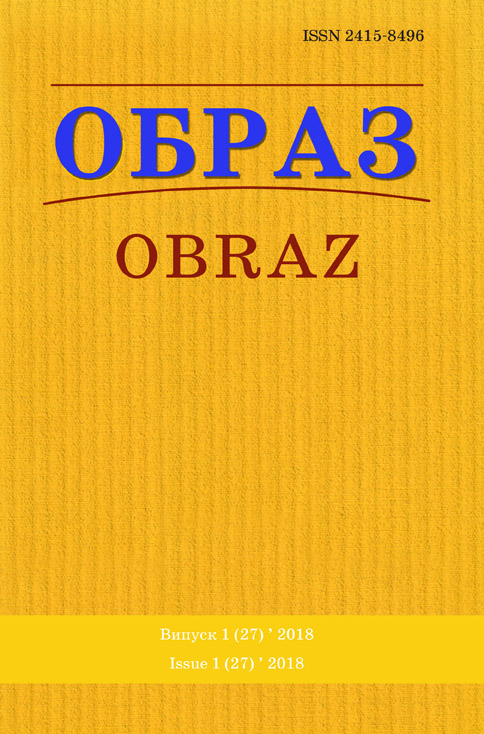Abstract
Introduction. In the information age the electronic mass media play a significant role in public opinion formation. Due to the large audience of readers and Internet users the reputable issues actively use such psycholinguistic tool as suggestion.
Relevance and purpose. Suggestion is an efficient means of public opinion formation because of its latent nature and orientation to the sensually-associative constituent of consciousness. The main purpose of realization of the suggestive instruments in the electronic media materials is the image formation of the politicians, public persons, drawing attention to the critical phenomena and events in the society, the formation of the general mood and attitude to the problems of different scale in order to accelerate the search for effective solutions, as well as the involvement of the masses into participation in various projects, including charity.
Methodology. The main method of our research was the qualitative-quantitative method of study of the documents, namely, the content analysis. On the basis of the latest scientific research the author determines four main groups of suggestive instruments and traces their implementation in the electronic edition «The Guardian».
Results. Verbal markers of suggestion are effectively applied in the electronic edition «The Guardian» at the lexical, morphological, syntactic and pragmatic level to implement the suggestive techniques. To construct each of the suggestive ploys a set of markers is used, which most effectively contribute to the realization of its main goal – forming a sustainable point of view regarding a certain object or a phenomenon, described in the materials. Non-verbal markers of suggestion implement the basic ploys at the graphic level with the help of paragraphemic means, as well as at the image level by means of visual tools.
Conclusions. Selection of a specific set of markers of suggestion is made depending on the goals and genre of publication. Therefore, every professional journalist should master the modern suggestive mass-media technologies to improve the level of media literacy, and to develop contra-suggestible strategies in order to resist in the informational war.
References
1. Germanov, V. G. (2003), «Mass media influence on subconsciousness», Thesis for cand. sc. (Philology): 10.01.08 , Taras Shevchenko Kyiv National University, Institute of Journalism, Kyiv, Ukraine.
2. Eksmidt, V. R. (2015), «Verbal Manipulation: Persuasion and Suggestion», Movni i kontseptualni kartyny svitu , Iss. 1, pp. 275–281, available at: http:// http://www.irbis-nbuv. gov.ua/cgi-bin/irbis_nbuv/cgiirbis_64.exe?I21DBN=LINK&P21DBN=UJRN&Z21ID=&S21R EF=10&S21CNR=20&S21STN=1&S21FMT=ASP_meta&C21COM=S&2_S21P03=FILA=&2_ S21STR=Mikks_2015_1_31 (access February 2, 2018)
3. Kutuasa, N. V. (2017), «Suggestion and manipulation: communicative influence types’ common and different characteristics», Zapysky z ukrainskogo movoznavstva. – Iss. 24, vol. 2, pp. 178–189, available at: http://zum.onu.edu.ua/index.php/main/article/view/141/136 (access February 2, 2018).
4. Makaruk, L. L. (2010), «Typology of Non-verbal Graphic Means in Newspaper Discourse», Naukovy visnyk VNU. Movoznavstvo, no. 7, pp. 334 – 340, available at: http://bo0k.net/index. php?p=achapter&bid=20073&chapter=1(access February 2, 2018).
5. Parshyn, P. B. (2000), «Speech influence: main spheres and sorts», Reklamny tekst: semiotika i lingvistika, ID Grebenshchikowa, Moscow, Russia, pp. 53–73.
6. Rizun, V. V. and Skotnikova, T. V. (2005), Metody naukovykh doslidzhen u zurnalistykoznavstvi [Scientific research methods in journalistic science], Taras Shevchenko Kyiv National University, Institute of Journalism, Kyiv, Ukraine, p. 97.
7. Ruda, O. G. (2012), Movne pytannya yak obyekt manipulyatyvnykh strategiy u suchasnomu ukrayinskomu politychnomu diskursi [Language question as an object of manipulative strategies in the modern Ukrainian political discourse], Kyiv, Ukraine, 232 p., available at: www1.nas.gov. ua/institutes/ium/Structure/Departments/Department5/.../ruda-o.pdf (access February 2, 2018).
8. Sukharuk, I. V. (2014), «Strategies and Tactics of Suggestion in the Modern Ukrainian Media Discourse», Visnyk Donetskogo universytetu, series B: gumanitarni nauky, no. 1–2, pp. 216–222.
9. Snytko, O. S. (2015), «Audiovisual Means of Suggestion in the Internet Communication: Application Strategies», Movni I kontseptualni kartyny svitu, vol. 52, iss. 2, pp. 194–210, available at: http://philology.knu.ua/files/library/movni_i_konceptualni/53/22.pdf (access February 2, 2018).
10. Kholod, O. M. (2011), Sotsialni kommunikatsiyi: sotsio- i psykholingvistychny analiz [Social communacations:social and psycolinguistic analysis ], iss. 2, PAIS, Lviv, Ukraine, 288 p.
11. Cherepanova, I. Yu. (2002), Zagovor naroda. Kak sozdat silny politicheskiy tekst [People’s incantation. How to make a strong political text], KSP+, Moscow, Russia, 464 p.
12. Chubur, V. V. (2007), «Realized and not realized authorship: accents and problems», Kultura narodov Prichernomorya, no. 101, pp. 155–158.
13. Brown J. A. C. (1963), Techniques of persuasion: from propaganda to brainwashing, Harmondsworth.

This work is licensed under a Creative Commons Attribution 4.0 International License.

